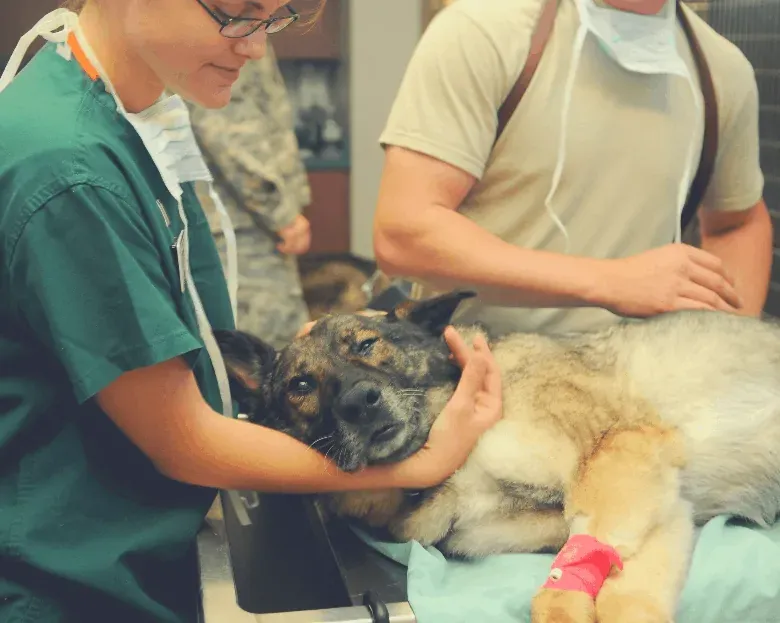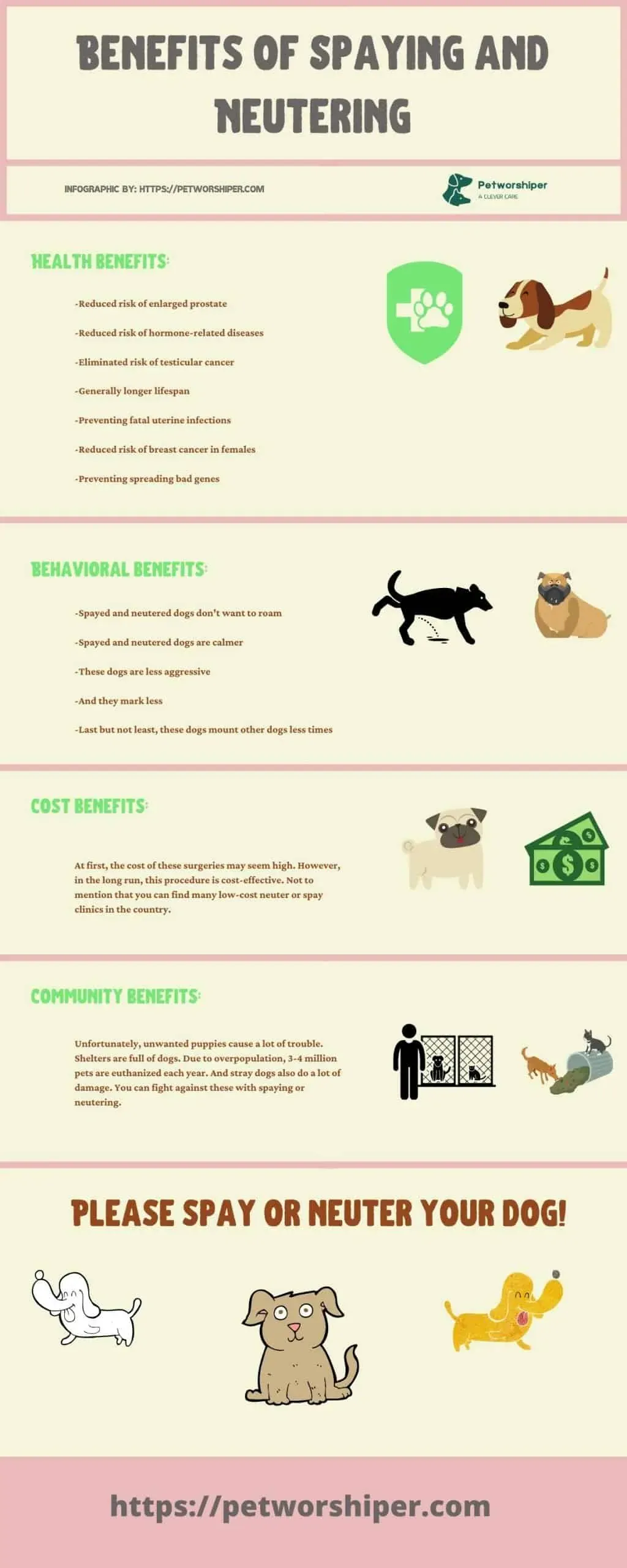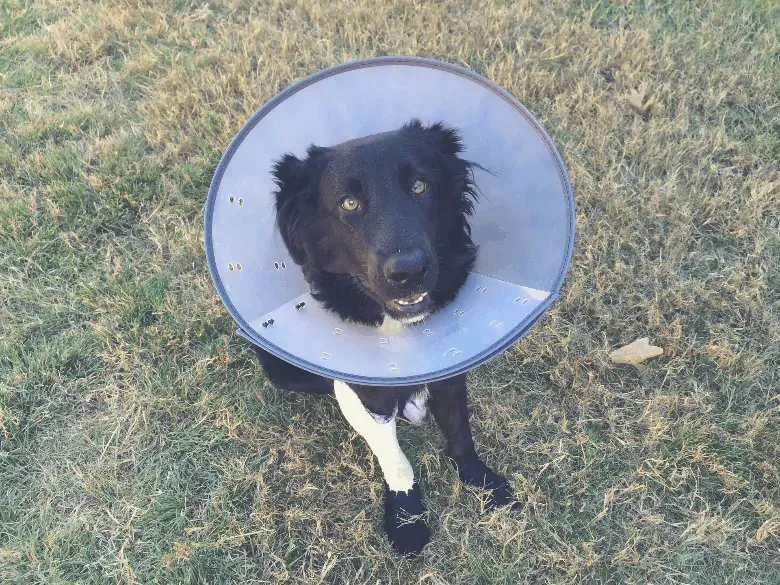We have always had dogs in the family since I was 12 years old. At that time, I didn’t ask my parents about spaying and neutering. I accepted the fact that if you buy a dog, you have to do one of these operations on him or her. Of course, I have since studied the subject several times and I know it is a good decision in many ways. First-time dog owners may have many questions about spaying or neutering. So I tried to get as many things about them as possible.
the difference between spaying and neutering
In fact, the difference is very simple: spaying is for females and neutering is for males.
On a spaying procedure, the vet removes the female dog’s reproductive organs. These organs are her ovaries and usually her uterus. After the operation, the dog won’t be able to get pregnant or be in heat. This procedure has two types. When the vet removes both uterus and ovaries, it’s called an ovariohysterectomy. The other type is an ovariectomy when only ovaries are removed. Both surgeries are equally safe and effective.

Neutering is also known as castration. When neutering a dog, both testicles and other structures associated with them are removed. Yet, the penis and the outer sac that once held the testes are not removed during the process.
There are other alternative procedures, for example, vasectomies, for male dogs. But these are not commonly performed.
Why you should spay or neuter your dog?

It’s a fact, that there are a lot of myths and misconceptions about spaying and neutering. But they have so many benefits. Here are the most common ones of these benefits:
Health benefits
Health benefits are not what pet owners firstly think about, but you should not forget them. For the reasons listed below, you may want to consider to spay or neuter your dog.
- Reduced risk of benign prostatic hyperplasia (enlarged prostate that comes with age) and prostatitis (prostate infection).
- Reduced risk of hormone-related diseases such as perianal adenoma (tumor around the anus).
- Eliminated risk of testicular cancer. This is the second most common cancer in intact (unneutered) dogs
- neutered dogs generally live longer lives than unneutered dogs
- preventing fatal uterine infections (pyometra)
- reduced risk of breast cancer in females
- Another reason to neuter is to prevent spreading bad genes. Pets with hip dysplasia, eye diseases, heart conditions, and many other genetic conditions should not be allowed to breed.

Behavioral benefits
A male dog who is not neutered has so many natural instincts. Every year millions of pets get lost and most of them are not returned to their owners. Neutering your dog will significantly lower his tendency to escape. The removing process will lower his testosterone level. This will cause beneficial changes in his behavior. He won’t feel the urge to roam or do about anything to find a mate. Yet, his interest in females may remain, but that will not be about reproduction. He will be likely calmer. He won’t be that aggressive with other males like before.
Another noticeable difference is in marking. Unneutered males like to mark their territory. You won’t be happy with this strong-smelling urine all over the house. You can avoid this problem with this surgery.
And last but not least, he might be less likely to mount other dogs. The same applies to people and inanimate objects.
Costs
Many justify not neutering or spaying their dogs is costs. It is a one-time cost and it may seem expensive at first. But everyone can save a considerable amount of money with this operation. This surgery’s cost is a lot less than having a whole new litter with several hungry puppies. The food, the treatments, all these things will cost you much more than this one-time cost. Not to mention that you can know that you are not contributing to the very real problem. Think about too many dogs in shelters and too few homes available for them. I will elaborate on this below.
You can find several Low-Cost Spay and Neuter Clinics, and Spay or Neuter programs where you can also save some dollars. So money shouldn’t be an excuse now
Community
Maybe the most important headache when you don’t neuter or spay your pet, is unwanted puppies.

Shelters are almost certainly full of rejected dogs. No matter which country we are talking about. The American Society for the Prevention of Cruelty to Animals (ASPCA) reports that approximately 6.5 million animals enter the shelter or rescue system annually. Of those 6.5 million animals, only an estimated 3.2 million find their way out of the shelter or rescue and into a home. And these animals were fortunate enough to say.
Because of this “pet overpopulation”, 3-4 million unwanted pets are euthanized each year.
Terrible to hear right? Spaying or neutering can somewhat reduce these numbers.
We need to mention stray animals. These animals pose a real problem in many countries. They can cause car accidents. They can also harm the endangered animals in nature or frighten people.
Seeing these arguments, you definitely can’t have more excuses for neutering!
Will my neutered/spayed dog really be fat?
I couldn’t count how many dogs we had in the family when I was a kid and almost all of them were neutered or spayed. Because of this, I can talk from personal experience, and I can say for sure this is a myth.
If you give your dog enough exercise and appropriate food, you can avoid obesity. If you don’t know exactly what to do about it, talk to your vet about a healthy diet and serving sizes. Avoid junk food and table scraps, and keep treats to a safe amount.
Exercising with your dog is not only for keeping her/him in shape. It’s also good for happiness and relationship. Except for special medical cases, obesity in a dog is almost always the fault of the owner. But if that’s the case, it’s even more important that you talk to your veterinarian.
When should you spay/neuter your dog?
Of course, the answer should be different for males and females. The vet can perform these surgeries on puppies that are several months old. But you should always consult your veterinarian. Not to mention that recommendations vary from breed to breed.
The traditional age for spaying or neutering a dog is between 4 and 6 months. You should wait until your puppies have passed through puberty. But there can be other situations. For example, when you take a female and a male dog to your home, you should neuter and spay them before the female goes into heat. According to the recommendation, you should neuter her anyway before going into heat. This can be somewhere between 5 and 10 months of age.
Dog size is an important factor in neutering. Smaller dogs can be neutered earlier. While for larger breeds your vet may recommend waiting until your dog reaches the age of one. I can’t say enough to talk to a specialist about this.
After the surgery
There are differences between the neutered males’ and spayed females’ recovery. Generally, your vet will give you instructions. Your pet will be better than in his new age after a couple of weeks.
After neutering, anesthesia may make him feel dizzy. Watch out and make sure that he won’t crush to anything and won’t get hurt. He might have nausea and loss of appetite, but that’s completely normal. It may take a few days at most. After surgery, the dog’s scrotum will be swollen for a few days. Don’t panic and do not assume that your doctor may not have performed the surgery properly. This swelling can be worse if the dog keeps licking the incision site. You’d better prevent it with a special cone (known as “cone of shame”).

Your vet will probably use stitches for the operation. These should be removed after 7-10 days. In the meantime, it is worth checking daily for wound healing.
Another thing you should pay attention to is activity. Maybe your dog is the most playful creature in the world (most of us think so). You need to restrict his activity for a couple of days so the incision doesn’t open. Bathing him is also not a good idea for about 10 days.
After spaying, your vet may want to keep your female dog overnight, however, it will not always happen. From all other angles, recovery is the same as with neutering. You also need to pay attention to prevent her from licking the wound and keep your eyes on the incision healing. Her stitches will also need to be removed after 7-10 days. It is also not advisable for her to play too much during this time.
Summary
There will always be a small chance of risk involved for animals under these operations. But neutering and spaying are common surgeries. If you talk to your doctor about the details as much as possible, this may be the wisest step you can take for your dog. Because of the benefits discussed above, there are no questions for me. As long as I have a dog, I will always perform these operations on them.


